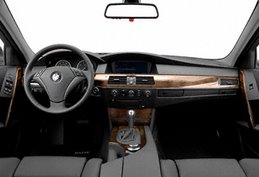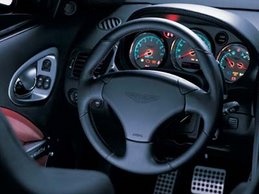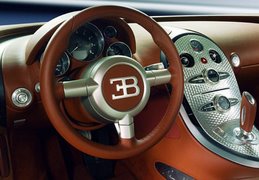 2006 Lincoln Zephyr - Using the same basic ingredients as the new Ford Fusion and Mercury Milan, the people responsible for the resuscitation of Ford’s luxury division have created a car that could just as easily have been conceived by Chrysler product planners of the K-car era, albeit with considerably better execution. Here is a sedan that is exactly as stimulating to drive as a nice sofa, and how that trait will seduce any suboctogenarian who still enjoys the interaction of man and machine is a mystery to us.
2006 Lincoln Zephyr - Using the same basic ingredients as the new Ford Fusion and Mercury Milan, the people responsible for the resuscitation of Ford’s luxury division have created a car that could just as easily have been conceived by Chrysler product planners of the K-car era, albeit with considerably better execution. Here is a sedan that is exactly as stimulating to drive as a nice sofa, and how that trait will seduce any suboctogenarian who still enjoys the interaction of man and machine is a mystery to us.As you’d expect, the Lincoln’s spring rates, damping, and bushings are tuned for smooth ride quality, and the power rack-and-pinion steering has higher-than-average assist, particularly at low speeds. Lots of assist and quick steering—just 2.5 turns lock-to-lock—don’t necessarily make a good combination. But we’re not talking old-time numb Lincoln steering here—just steering that’s consistent with the sense of ennui that goes with guiding this car o
 n its appointed rounds. Daddy, are we almost there yet?
n its appointed rounds. Daddy, are we almost there yet?Like its Ford and Mercury cousins, the Zephyr is powered by Ford’s 3.0-liter Duratec V-6, mated with a six-speed automatic transmission, still a rarity in this size class. In the Zephyr, the Duratec generates the same 221 horsepower as in the Fusion. Even with a 94-pound weight penalty over the Fusion, the Zephyr clocked a 0-to-60-mph time that was 0.1 second quicker than that posted by the Fusion SEL (base price, $22,360) we tested last December (“Mid-Size Four-Door Sedans”): 7.3 seconds versus 7.4. But in the same test, a Honda Accord EX sprinted to 60 in 6.6 seconds.
Okay, power isn’t everything, but it is a key component in the prestige-car biz, particularly with those more youthful customers that Lincoln covets. Particularl
 y in a car whose other attributes seem better conceived for senior citizens than young affluents who would really rather be driving Bimmers. The interior appointments, for example, incorporate quality materials (including real maple trim) and tasteful colors, but the high cowl, squarish dashboard shapes, and loose-fit bucket seats would be more at home in a 10-year-old Buick.
y in a car whose other attributes seem better conceived for senior citizens than young affluents who would really rather be driving Bimmers. The interior appointments, for example, incorporate quality materials (including real maple trim) and tasteful colors, but the high cowl, squarish dashboard shapes, and loose-fit bucket seats would be more at home in a 10-year-old Buick.Regarding the Zephyr’s styling, the Lincoln people refer to “classic proportions” and suggest associations with the graceful lines of the original Zephyr of 1936. What we see here are classic front-wheel-drive proportions—that is, a significant front overhang abetted by a big ol’ Lincoln grille.













No comments:
Post a Comment